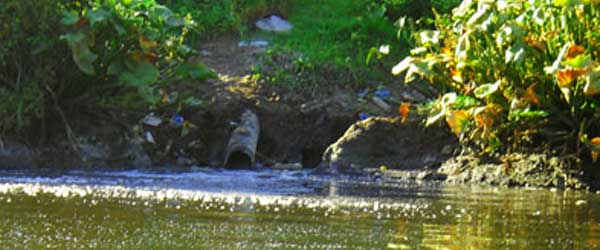River Sal findings are wake-up call to save our water bodies
BY ADELMO FERNANDES
This is with reference to the article “Tisreos Dying In Sal” (NT May 3). With the amount of pollutants, waste, sewerage and garbage being discharged into the rivers, such a man-made disaster was waiting to happen. The finding of the pollution of river Sal that has led to the destruction of the shell fish could be just the tip of the iceberg. It is not only river Sal that is being subjected to such pollution but other rivers too need to be studied for the level of pollution it has reached before it is too late. Otherwise we could reach a point wherein we are faced with the dilemma of all our freshwater bodies being polluted to such an extent that it cannot sustain any marine-life. Just like the Dead Sea has no marine life due to the high salinity factor, the rivers in Goa could b e devoid of marine life due to the high level of pollutants. The high level of pollution in the river Sal will cause the destruction of not just the clams but other marine life as well. It is understood that the shellfish died as they couldn’t sustain the high concentration of chemicals as they are sedentary while the fish has survived as it can sense the reaction and move away to safety. If remedial measures are not taken on a war-footing, a time may come when the entire river will be polluted and even the
Garbage seen dumped in the River Sal,
Joao Sousa M I NT
It is not only river Sal that is being subjected to such pollution but other rivers too need to be studied for the level of pollution it has reached before it is too late. Otherwise we could reach a point wherein we are faced with the dilemma of all our fresh-water bodies being polluted to such an extent that it cannot sustain any marine-life
fish may not have a “safe place” to swim to and thereby face the same consequence as the shellfish. It is pertinent to note that dead fish floating on the water has become a regular phenomenon at the Vadem lake in Vasco.
It is understood that the fish die because of the less amount of oxygen in the water as a result of the pollution. The Goa government needs to come out with a comprehensive policy to save all our water bodies, be it the rivers, lakes, springs, the sea and even the ground-water (most of our wells contain water which is not potable) from further pollution. We are literally facing an environmental disaster.
Besides dumping the garbage and waste on the land, we have also been dumping the waste in the rivers and lakes. The only difference is that while the waste and garbage dumped on the land is visible, that dumped in the water-bodies is not visible. But its effect can be felt by way of destruction of marine life.
This will happen when the pollution has crossed the sustainable limit by which time it could be too late to save the marine life. We could be heading towards a man-made disaster. A time may come when it could be dangerous even to consume fresh-water fish because of the level of pollutants in the water. It may be recalled that the authorities have warned the public not to eat/consume fish caught from the Vadem-lake in Vasco as it could be dangerous for human consumption due to the high level of pollutants in the water. Such warnings could echo at other water-bodies elsewhere in the state, like the rivers, unless remedial measures are taken on a war footing. The findings of the man-made pollution in river Sal must be considered as a wake-up call to save our water-bodies.
The Goa government needs to come out with a comprehensive policy to save all our water bodies, be it the rivers, lakes, springs, the sea and even the ground-water (most of our wells contain water which is not potable) from further pollution. We are literally facing an environmental disaster
(The writer is a freelancer based in Vasco.)
Readers are invited to send their views on current topics exclusively to The Navhind Times for the My Take column to mytake@navhindtimes. com or post it to The Navhind Times office. In both cases ‘My Take’ should be in the subject line of the email or superscribed on the envelope as the case may be. The views should be in about 500 words. A one-line introduction on the professional status of the writer is a must.

